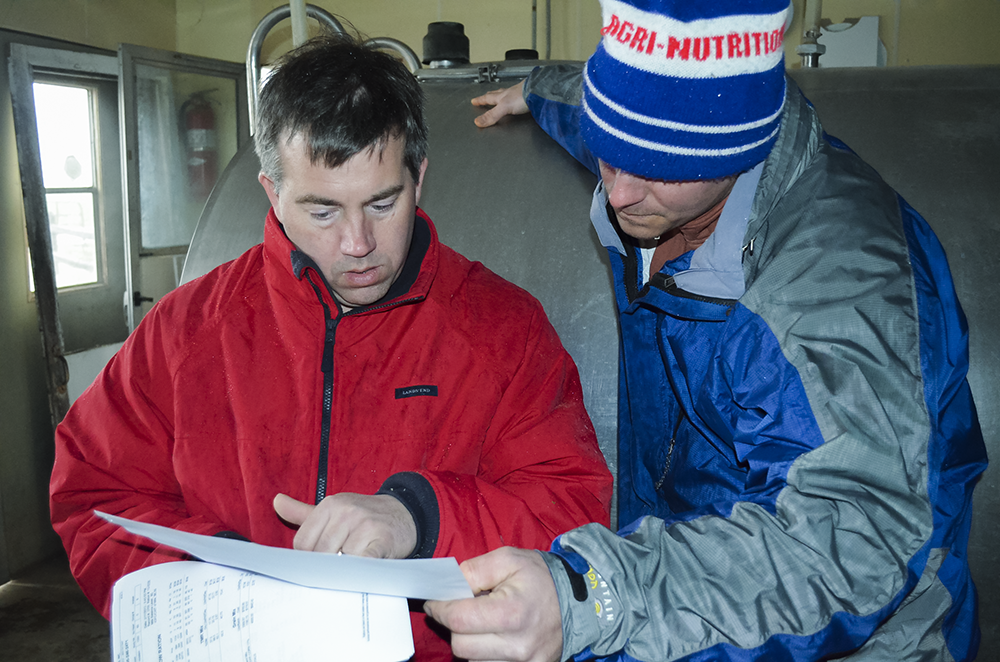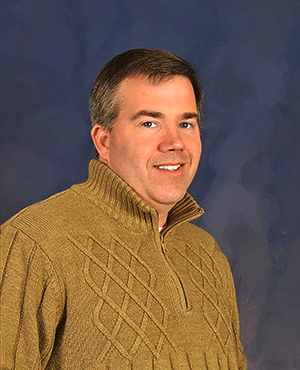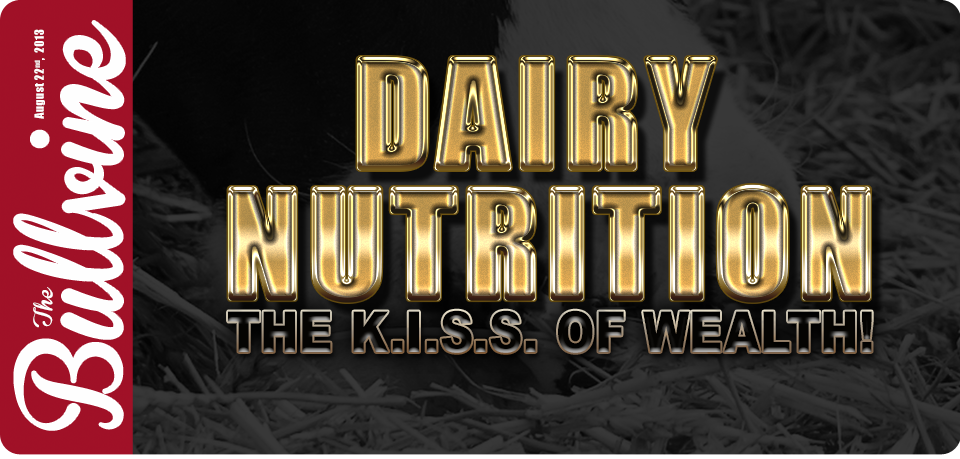Thinking of our personal health and hearing the term ‘nutrition’, you might be motivated to eat more vegetables. That’s simple and we all like the K.I.S.S. (keep it sweet and simple) principle.
Dairy Breeding is Simple Too
All you have to do is pick the right dairy breed, the right dairy genetics and, at least occasionally, manage to have Mother Nature and the marketplace somewhat on your side and it follows that you will produce buckets of milk and be the proud owner of a sustainable dairy business. And that’s exactly why we more often face the O.U.C.H. syndrome – Overworked Underproducing Cattle Herds. Why is it that, with all the technology, science and passion at our fingertips, we are missing something?

They Are What They Eat!
Cows eat every day. Cows are milked every day. It would seem to follow that those simple, daily actions could be the key to simplifying our dairy success. Perhaps dairy breeders are missing opportunities and should seek expert help from nutrition consultants. After all, meeting production, herd health and economic goals directly affects the profitability of every dairy herd. The tricky part is that every dairy operation has unique issues that must be considered as part of the nutrition solution.
Why Bother With a Nutrition Consultant?

Not Just a Quick Fix. And BORING is good too!
The very nature of dairy breeding has conditioned breeders to the fact that any process we implement or change we make must be undertaken not as a short term fix but with a view to profitability for many years to come. Changes are both feared and welcomed. Feared because they’re never easy. Welcomed because of the potential for improvement. Dr. Bascom has a somewhat unconventional view of change as it relates to nutrition. “With my clients I am striving for BORING. I want a boring ration that never changes because we feed the same thing all the time. I want cows that are BORING because they are healthy, comfortable and get bred in a timely fashion. I want my herd visits to be BORING because we have no major issue to consider. My point is the goal is to get our clients to a place where we are meeting our goals and rarely need to make any big changes. At this point we make very minor adjustments when we need to make a change. The cows are happy, the producer is happy, and I am happy.”
 From the Bunker to the Bank!
From the Bunker to the Bank!
We spend research dollars to identify a cow’s genes to the smallest snippet. We spend millions of dollars on the cow with the best dairy conformation. But we can’t agree on what to feed her at the bunker. Dr. Bascom feels that dairy nutrition is economically imperative. “The producer that isn’t working with a nutritionist has a lot as risk financially. The value of feed fed to a lactating cow can be $8 or more per day. For a 100 cow herd the value of feed fed in a year is well over $250,000! With feed costs so high, optimizing income over feed cost becomes critical.” He backs up the statistics with personal experience. “When ANC picks up a new client that was not using a nutritional consultant prior to me, it is not unusual for us to increase income over feed cost by $0.25/cow/day. This adds up to a significant increased annual income.”
Keep Your Money Growing Just for You
“Another significant reason to work with a nutritional consultant is that they can bring new ideas to the farm. Consultants are exposed to a diverse range of information including what we learn from other clients, trade shows, continuing education, and other people in our support network. Part of our job as an advisor is to filter through all this information and bring back to our clients what is most applicable to their situation?”
How to Increase Milk Production
As I write this, I begin to see that the practice of nutrition is like the practice of medicine. Being blessed with both an animal nutritionist and a medical doctor in the family, it is increasingly clear to me that the really good practitioners in either field are the ones who not only understand the science but can put it into practice. Dr. Bascom readily is a storehouse of working examples derived from dairy nutrition consulting. “Let’s talk about increasing income over feed cost. Often this includes increasing milk production. However, too often we can fall into the trap of pushing for higher milk production in a way that isn’t profitable. When we decide that higher milk production is the key to increasing income over feed cost then we look at forage quality, cow comfort, facilities, and a variety of management factors to decide how to reach this goal. The answer is different on every farm. For example if I have a client that has average days in milk of 250 days then we are not going to increase milk production until we improve reproduction. On the other hand, a client that is overstocking their facilities might experience an immediate increase in milk per cow and total milk shipped by culling out some of their bottom end cows thus improving cow comfort for the rest of the herd.”
What Does Quality Cost?
In polling dairy breeders who do not use consultants, the number one reason given is that either the consultant or the feed program will be too expensive. Dr. Bascom appreciates the opportunity to answer this concern. “Again, we start by talking about income over feed cost! Sometimes decreasing out –of-pocket costs drops income over feed cost! The answer to this question is to look for ways to make the best use of the resources available on the farm. We ask questions like, are we getting the most value out of the forages we are feeding? Are we feeding commodities that are competitively priced? Are we wasting feed?” Too often we measure financial success by decreased input dollars. Sometimes we have to spend a little to make more. A key learning to internalize is that you can waste money just as easily on excessive quality as you can on deficient quality. Optimum quality is the goal.
Let’s Ruminate on Components!
“In most cases increasing components will increase income over feed cost. The exception would be in markets that don’t pay premiums for high component milk. Low components could be an indication of cow health issues. So fat and protein tests are something I watch closely.
The first step in high component milk is about feeding a healthy rumen. Forage quality is paramount. We need high quality forages to optimize rumen health. So the first step is to make sure forage quality is optimum. We also balance carbohydrates and degradable protein to encourage rumen health. The rumen bugs produce very high quality protein that drives both milk yield and components. After we have designed a diet for optimum rumen health and to maximize the production of high quality protein by the rumen then we look at additives. These would include bypass protein sources and rumen protected amino acids.”
 Beyond the Basics to Practical and Personal
Beyond the Basics to Practical and Personal
One of the most rewarding aspects of being connected to the dairy industry is hearing stories such as the ones Dr. Bascom shared with us. “Years ago I worked with a dairyman in the southeastern part of the US that told me I got more milk for him than anyone else. I was only able to get his cows to 50 lbs. of milk but he was close to 30 when we started. This won’t get me on the cover of a major dairy magazine but to him it was a really big deal.” Of course there are times ANC’s client’s success has meant rising to a challenge. “One of my ANC clients challenged me to feed as much forage as we could feed to his cows and maintain healthy cows, production at 75 lbs. of milk, and high components. We were able to get the diet up to 82% forage as a percent of dry matter. We maintained milk at 75 lbs., fat test over 4.0%, protein at 3.3%, cut purchased feed costs, cow health improved, and reproductive performance improved. I didn’t think we could take the forage to this level without losing milk!” Every client has different goals, says Bascom. “Several years ago I started working with a new client that markets embryos. The goals were to maintain fat test at 4.0%, protein at 3.4%, and cut purchased feed cost. We made adjustments to the diet to feed more of their homegrown forages to cut purchased feed cost. We also added a liquid feed to the ration and made some adjustments in how the TMR was mixed. Not only did we save money but the cows came up in both protein and fat test. This put more money in the milk check and also made more cows in the herd eligible for the foreign embryo market.”
ROF is Good. Return on Relationship (ROR) is Great.
It doesn’t matter what facet of the dairy industry you work in, you’re going to find passionate people. Dr. Bascom is one of them. “I love cows,” says this ANC consultant and adds, “Following a career in nutrition allows me to be around cows and people who love cows.” And that is a key motivator for him. “The cow success stories are rewarding but perhaps the most rewarding experiences are the people success stories. I have celebrated weddings and the birth of children with my clients. I have watched their children grow-up and find their way into the dairy operation. I have cried tears at the loss of their loved ones. These experiences are just as rewarding as celebrating high rolling herd averages, the sale of bulls into AI, All-American nominations, and high classification scores. This is very much a people business and it is so rewarding to gain the trust of my clients in a way that they want to share good times and the hard times in life with me.”
The Bullvine Bottom Line
We can all identify with the passion that makes a career in dairying the focus of our daily lives. However, we can’t let rose colored glasses cause us to limit our dairy herd success. Dairy nutrition consultants help us to investigate and discover ways to overcome unnecessary or unseen obstacles. So that leaves the Simple Question: “Why bother with nutrition consultants?” And leads to the Simple Answer: “You can’t afford not to.”
Get original “Bullvine” content sent straight to your email inbox for free.








 From the Bunker to the Bank!
From the Bunker to the Bank! Beyond the Basics to Practical and Personal
Beyond the Basics to Practical and Personal









Leave a Reply
You must be logged in to post a comment.